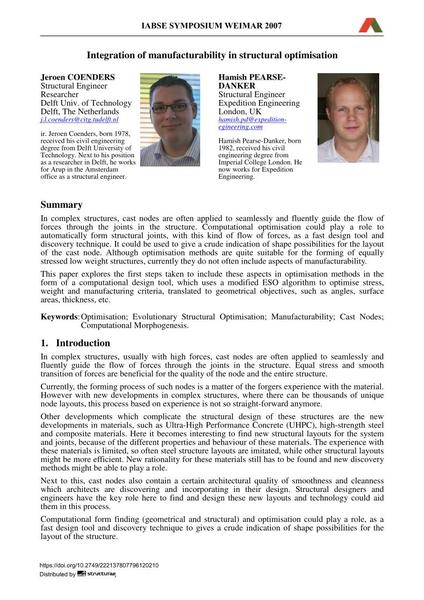Integration of manufacturability in structural optimisation

|
|
|||||||||||
Bibliographic Details
| Author(s): |
Jeroen Coenders
Hamish Pearse-Danker |
||||
|---|---|---|---|---|---|
| Medium: | conference paper | ||||
| Language(s): | English | ||||
| Conference: | IABSE Symposium: Improving Infrastructure Worldwide, Weimar, Germany, 19-21 September 2007 | ||||
| Published in: | IABSE Symposium Weimar 2007 | ||||
|
|||||
| Page(s): | 198-201 | ||||
| Total no. of pages: | 8 | ||||
| Year: | 2007 | ||||
| DOI: | 10.2749/222137807796120210 | ||||
| Abstract: |
In complex structures, cast nodes are often applied to seamlessly and fluently guide the flow of forces through the joints in the structure. Computational optimisation could play a role to automatically form structural joints, with this kind of flow of forces, as a fast design tool and discovery technique. It could be used to give a crude indication of shape possibilities for the layout of the cast node. Although optimisation methods are quite suitable for the forming of equally stressed low weight structures, currently they do not often include aspects of manufacturability. This paper explores the first steps taken to include these aspects in optimisation methods in the form of a computational design tool, which uses a modified ESO algorithm to optimise stress, weight and manufacturing criteria, translated to geometrical objectives, such as angles, surface areas, thickness, etc. |
||||
| Keywords: |
optimisation Evolutionary Structural Optimisation manufacturability Cast Nodes Computational Morphogenesis
|
||||
